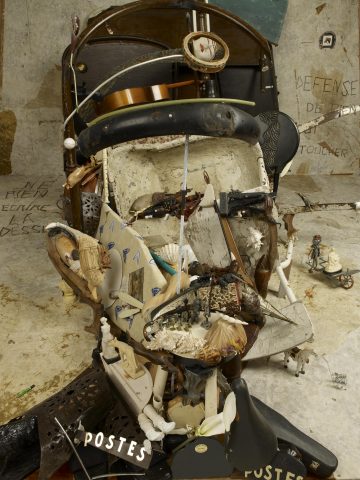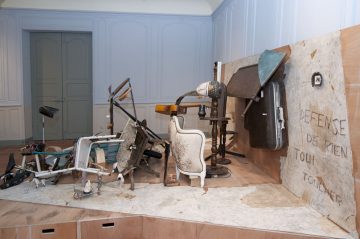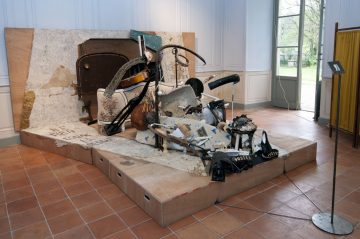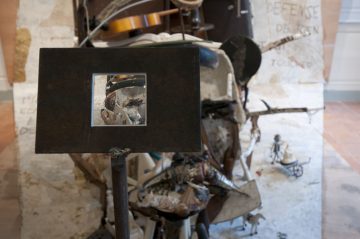Bernard PRAS 1952
Bernard Pras was born in Roumazières-Loubert in 1952. He graduated from the Ecole des Beaux Arts de Toulouse in 1974 and developed the aqua engraving technique in 1989. After a few years of doubt in his artistic research, he decided to create assemblages and installations in 1994. From a preparatory drawing, the artist collects objects: toys, kitchen utensils, clothes, household materials… . He assembles them from the point of view of his camera lens. In this way, he creates anamorphoses, visible to the viewer only through the medium of photography. The mass of objects then becomes an image, an image that is usually familiar to everyone, since the artist draws his inspiration from the history of art and contemporary society. He also makes videos in which it is possible to observe the optical destructuring of his works.
Bernard Pras’ artistic approach has been presented in numerous French and European galleries. Most recently, it was possible to admire his work at the Musée Touquet-Paris-Plage during the 2018 exhibition Sans objet. Somogy Editions dedicated a monograph to him in 2017. In 2014, he organised the Pras à Cheval exhibition at the Château de Hauterives.
Installation Hommage au Facteur Cheval 2014
His installation, Hommage au Facteur Cheval, is emblematic of the artist’s work. A motley collection of accumulated objects, this portrait of Ferdinand Cheval in his postman’s uniform was inspired by a 1905 photograph. In the end, the two artists are quite similar, since they both collect objects. Whereas the self-taught artist in The Ideal Palace used stones, this anamorphosis is made up of chairs, guitars, Buddha heads, wheelbarrows and doll’s legs. Behind the postman stand two walls inscribed with the words: “NE RIEN ÉCRIRE LÀ-DESSUS” and “DÉFENSE DE NE RIEN TOUCHER”, which appear on the east facade and in the gallery of the Palais idéal respectively. As if to recall the identity of the naive architect, a photograph of an equine head is inscribed in a horseshoe. Further down, a little man wearing a nut for a hat pushes a wheelbarrow loaded with Michelangelo’s pietà. In a reference to the history of Western art, you can also see the back of a Venus de Milo and the she-wolf from Remus and Romulus. As in the Ideal Palace, there is a distinct lack of emptiness in the composition. We had to stand back to fully appreciate the nature of this composition, just as we sometimes have to climb the Belvedere, built by the postman Cheval in front of these Three Giants, to admire the scale of his work.




